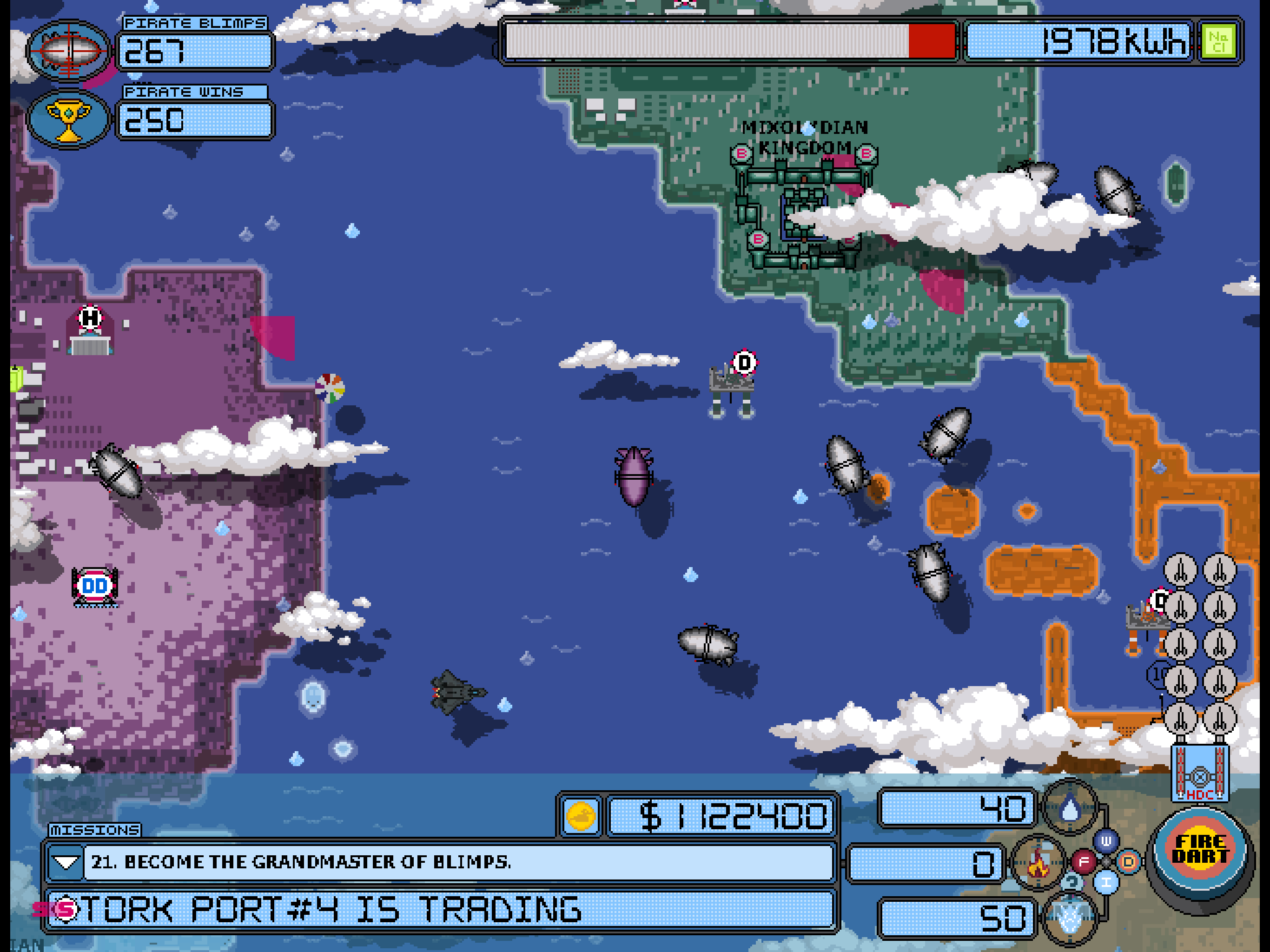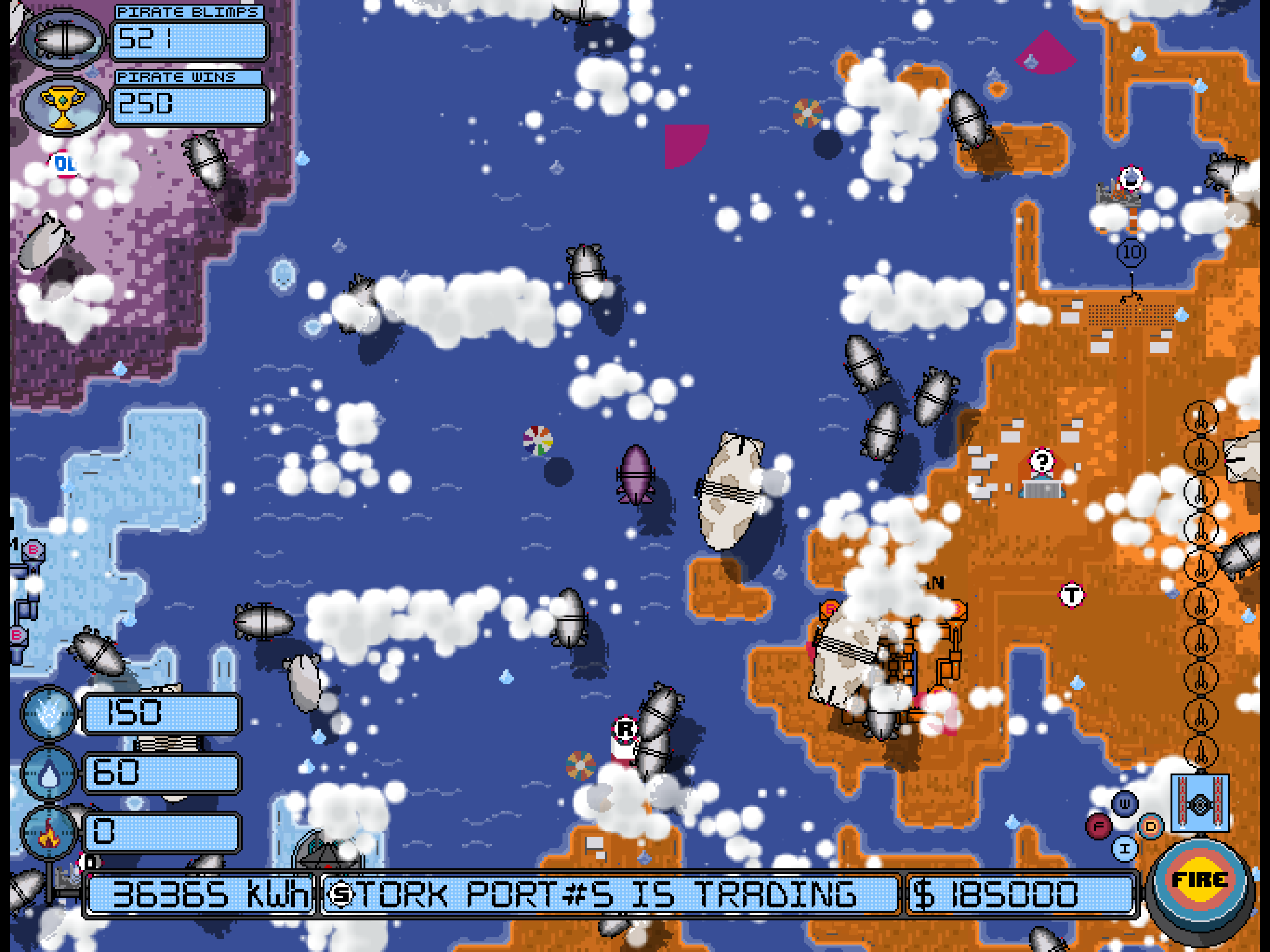Ever wondered just how many blimps float gracefully above our planet at any given moment? It's a question that might pop into your thoughts, sparking a curiosity about these big, gentle giants of the sky. While the precise count of these lighter-than-air craft might seem like a straightforward piece of information, the way we talk about their numbers, or any large collection of things, often leads us to consider a rather common yet surprisingly deep word: "many." So, too it's almost, when we ask about the total number of blimps, we're really stepping into a discussion about what that word, "many," truly signifies.
Thinking about a collection of these aerial vehicles, whether it's a few or a substantial grouping, brings up the idea of quantity. The concept of having a sizable but not quite exact count of anything, like, your favorite collection of old records or, indeed, the majestic blimps that might be out there, is where the word "many" finds its home. It helps us express a sense of abundance without needing to provide a precise tally, which, in some respects, is quite handy for everyday conversations.
This simple word, "many," holds a lot of weight in how we communicate about numbers that are considerable but remain unspecific. It's a fundamental part of our daily talk, helping us paint a picture of a large grouping without getting bogged down in exact figures. We can use it to describe a good deal of things, whether they are the kind of items you can easily count or, perhaps, those that are a bit more spread out, like those unique airships. This piece will explore the various facets of this word, using the thought of blimps as a friendly guide.
- Eddie Guerrero Death Cause
- Motels In San Ramon Ca
- Uk Voltage Supply
- Destiny Servers Down
- How Do Lakai Shoes Fit
Table of Contents
- What Does 'Many' Really Mean When We Talk About How Many Blimps Are In The World Today?
- When We Use 'Many' For How Many Blimps Are In The World Today, What Are We Really Saying?
- How 'Many' Shows Up in Questions and Negative Statements About How Many Blimps Are In The World Today
- Can We Count 'Many' Blimps - Exploring Countable Nouns and How Many Blimps Are In The World Today?
- The Idea of 'Many' and Things We Can Tally When Considering How Many Blimps Are In The World Today
- How Does 'Many' Compare to Other Ways We Express Big Numbers for How Many Blimps Are In The World Today?
- Picking the Right Words - 'Many' Versus 'A Lot Of' for How Many Blimps Are In The World Today
- What Makes Something 'Many' - Thinking About How Many Blimps Are In The World Today?
What Does 'Many' Really Mean When We Talk About How Many Blimps Are In The World Today?
When we ask "how many blimps are in the world today," and someone responds with "many," what exactly does that tell us? The core idea behind the word "many" is that it points to a sizable, yet not precisely fixed, collection of things. It suggests a grouping that is more than just a few, but without giving an exact count. Think about it like this: if you were to look up and see a good number of these airships drifting by, you might simply say, "Wow, that's many blimps!" This way of speaking captures the general sense of a large quantity without getting into the specifics of an exact tally, which is often just what we need in casual conversation. It's a way to communicate a general sense of abundance, you know, without needing to pull out a calculator.
When We Use 'Many' For How Many Blimps Are In The World Today, What Are We Really Saying?
The word "many" serves as a way to indicate that you are discussing a sizable count of people or items. For instance, if you were to observe the skies and reflect on how many blimps are in the world today, using "many" would convey that you perceive a considerable quantity, without necessarily knowing the exact figure. It's a term that helps us generalize about a large grouping. The phrase "I don't think many people would argue with that" illustrates this perfectly; it means that only a small number of folks would likely disagree, implying that the majority would agree. Similarly, when we say "not many films are made in Finland," we are suggesting that the number of movies produced there is quite small, rather than a large amount. This helps us get a sense of proportion, basically, even without a hard number.
How 'Many' Shows Up in Questions and Negative Statements About How Many Blimps Are In The World Today
It's interesting to note that "many" is most frequently put into action within questions and statements that express a lack of something. For instance, if you're trying to figure out how many blimps are in the world today, you might ask, "Are there many blimps still flying?" This structure is quite common. Likewise, in a statement that says "no," such as "There aren't many blimps left from that era," the word "many" helps to convey a small number. It’s also often paired with words like "too," "so," and "as" to convey a significant amount. For example, "There are too many blimps for one hangar" or "I wish there were so many blimps we could see them every day." These pairings help to emphasize the quantity, whether it's an excess or just a general large count, you know, without getting too technical.
- Jp Morgan Chase Home Loans
- Marie Elyse Soape
- Chase Mortgages
- Neil Cavuto Weight Loss
- Eddie Guerrero Death
Can We Count 'Many' Blimps - Exploring Countable Nouns and How Many Blimps Are In The World Today?
When we consider how many blimps are in the world today, it's important to remember that "many" is typically put to use with things you can actually tally. Blimps, being individual airships, are certainly items we can count one by one. This means "many" is a fitting word to describe a sizable collection of them. It works well with plural words that represent individual items, like "properties," "days," and "students." You wouldn't use "many" for something like water or happiness, because those are things you can't really count individually. So, in the context of our aerial friends, "many" is a perfect fit for talking about a large, yet unspecified, collection of them. It's a rather straightforward way to talk about groups of things, you see.
The Idea of 'Many' and Things We Can Tally When Considering How Many Blimps Are In The World Today
The concept of "many" truly shines when we are dealing with items that are distinct and can be tallied. When we think about how many blimps are in the world today, each blimp is a separate unit, making them perfectly suited for description with "many." This word, "many," always comes before a word that represents more than one thing you can count. It helps us describe a large, yet not precisely fixed, quantity of such items. Other expressions that convey a similar idea include "a couple of," "a few," "a handful of," and "several." These all point to a grouping that is more than one or two, but they don't give a specific number either. It's about getting a general sense of volume, basically, without the need for an exact figure.
How Does 'Many' Compare to Other Ways We Express Big Numbers for How Many Blimps Are In The World Today?
While "many" is a very common and popular word for expressing a large quantity, there are other terms that convey similar ideas. Words like "innumerable," "manifold," and "numerous" all hint at the presence of a great number of units, or a succession of them. "Innumerable," for instance, suggests a count so vast it's beyond tallying, perhaps like the stars, or maybe even, hypothetically, how many blimps are in the world today if they were truly everywhere. "Manifold" points to many different kinds, while "numerous" simply means plentiful. "Many" is often preferred because it's straightforward and widely understood. It's a simple, direct way to get the message across, you know, without getting too fancy.
Picking the Right Words - 'Many' Versus 'A Lot Of' for How Many Blimps Are In The World Today
When forming statements that are positive, we typically put "a lot of" into action rather than "much" or "many." So, if you were to say, "There are a lot of blimps flying today," that would be a more common way to express a large quantity in a positive declaration. The phrase "a lot of" or "lots of" can be put to use with both things you can't tally (like "water") and groups of things you can tally (like "blimps"). For example, you might say "a lot of water" or "a lot of blimps." This makes "a lot of" a very flexible phrase for expressing quantity in positive sentences. It's a subtle but important distinction in how we choose our words, you see, especially when talking about things like how many blimps are in the world today.
What Makes Something 'Many' - Thinking About How Many Blimps Are In The World Today?
To acquire a sizable quantity of something, you often engage in an activity on a regular basis. For instance, if you were to drive your car considerable lengths often, it would acquire many miles. This principle applies to other things too. If you frequently participate in events where blimps are present, you might, in a way, encounter many blimps over time. The word "many" refers to a large collection of items that one can tally, and it is usually put to use with plural words for things you can count, such as properties, days, and learners. So, when we ask, "how many people will be at the party?" we are looking for a numerical answer, but if the answer is "many," it signals a good-sized gathering without an exact figure. This concept of "many" is quite versatile, you know, allowing for a broad sense of quantity without getting bogged down in precise counts.
Related Resources:
Detail Author:
- Name : Dr. Arvel Kautzer
- Username : qbogisich
- Email : kurtis23@yahoo.com
- Birthdate : 1987-04-14
- Address : 6457 Berge Well Apt. 439 Haydenbury, UT 13528-4971
- Phone : 480-621-8539
- Company : Sauer PLC
- Job : Nursing Aide
- Bio : Aut recusandae laboriosam libero quia atque iusto laudantium. Ut quia at minima facilis et omnis id. Voluptate nihil qui incidunt qui et. Rem adipisci quisquam est quaerat fugiat deleniti.
Socials
instagram:
- url : https://instagram.com/delpha6730
- username : delpha6730
- bio : Ut est velit et. Iusto autem voluptate cupiditate dolor voluptate rerum explicabo ea.
- followers : 1683
- following : 2539
twitter:
- url : https://twitter.com/delpha1947
- username : delpha1947
- bio : Aut pariatur placeat veniam soluta non nam. A aut saepe ad officia vitae et corporis voluptatem. Quo eos omnis assumenda sunt commodi harum.
- followers : 3837
- following : 2259


